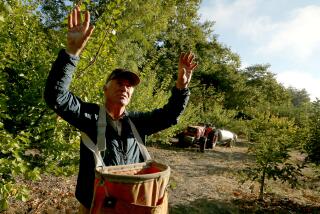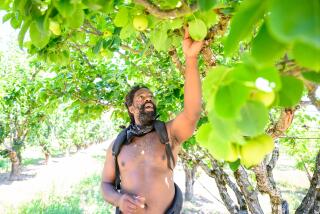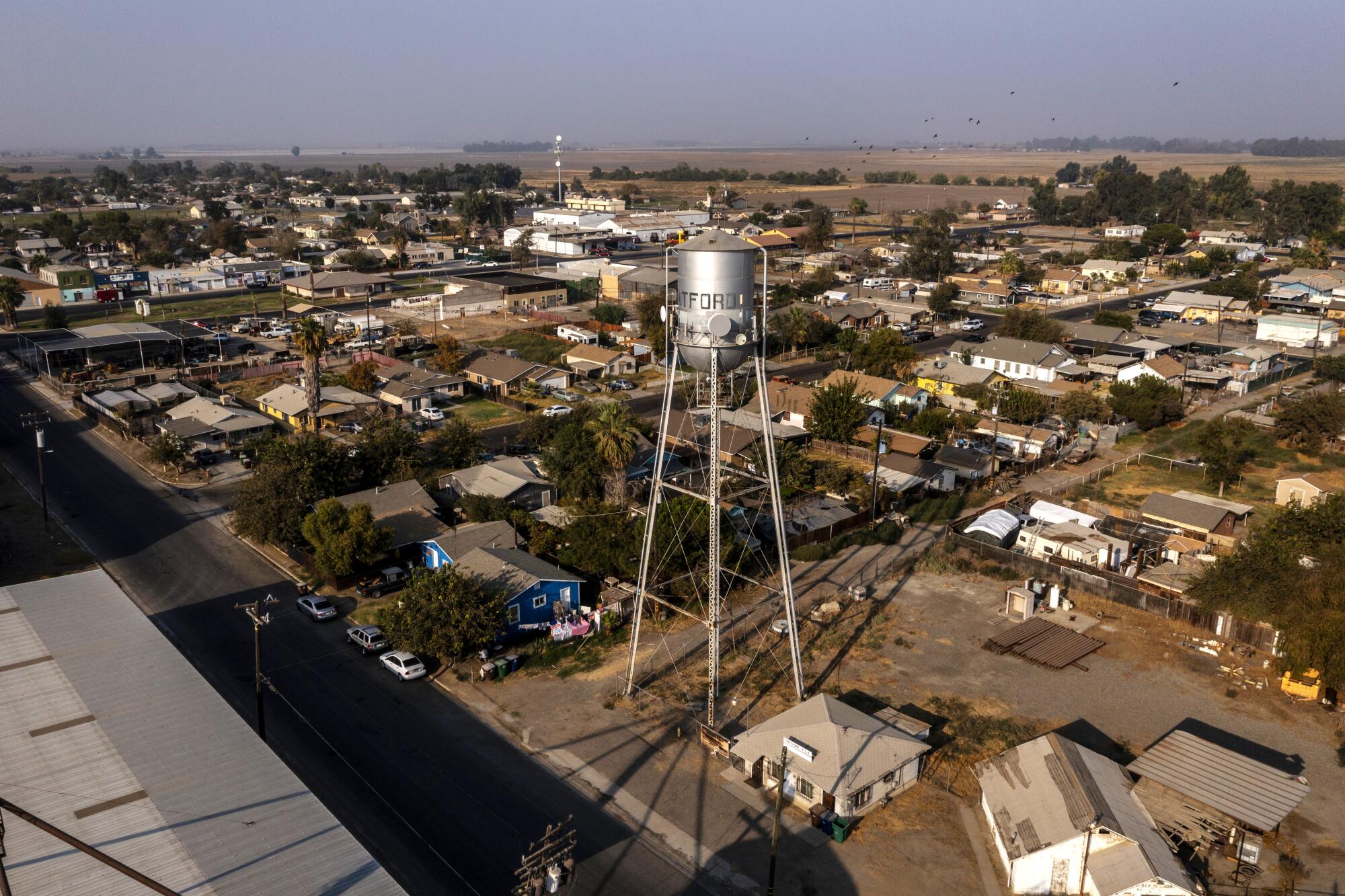
STRATFORD, Calif. — Ramon Chavez was a 7-year-old in Culiacán, Mexico, when his parents told him that they were traveling to the United States. He thought he was going to Disneyland.
They ended up in Stratford.
Chavez spent his childhood and teenage years running around the small farming town in the Central Valley and swimming with his friends in the nearby canals. Everybody, as the saying goes, knew everybody. Small businesses, like gas stations and mercaditos, spoke to a self-sustaining life far from the conveniences of the big city.
“I fell in love with it ever since,” said Chavez, now 39.
But like many rural towns in the American West, Stratford, about 40 miles south of Fresno in Kings County, is a shell of even its humble heyday. It’s fading amid ever-rising temperatures, years of drought and recession.
Westlake Farms, once the biggest employer in town, scaled down its 65,000 acres and had massive layoffs in 2000 to a bare bones operation. U.S. Census figures show Stratford’s population shrank from 1,277 in 2010 to 901 in 2020.
Land sinks here, sometimes at nearly historic high rates of more than 1 foot per year, because of excessive groundwater pumping. Out of its four wells, Stratford can only rely on one — the others are unreliable and are unusable.
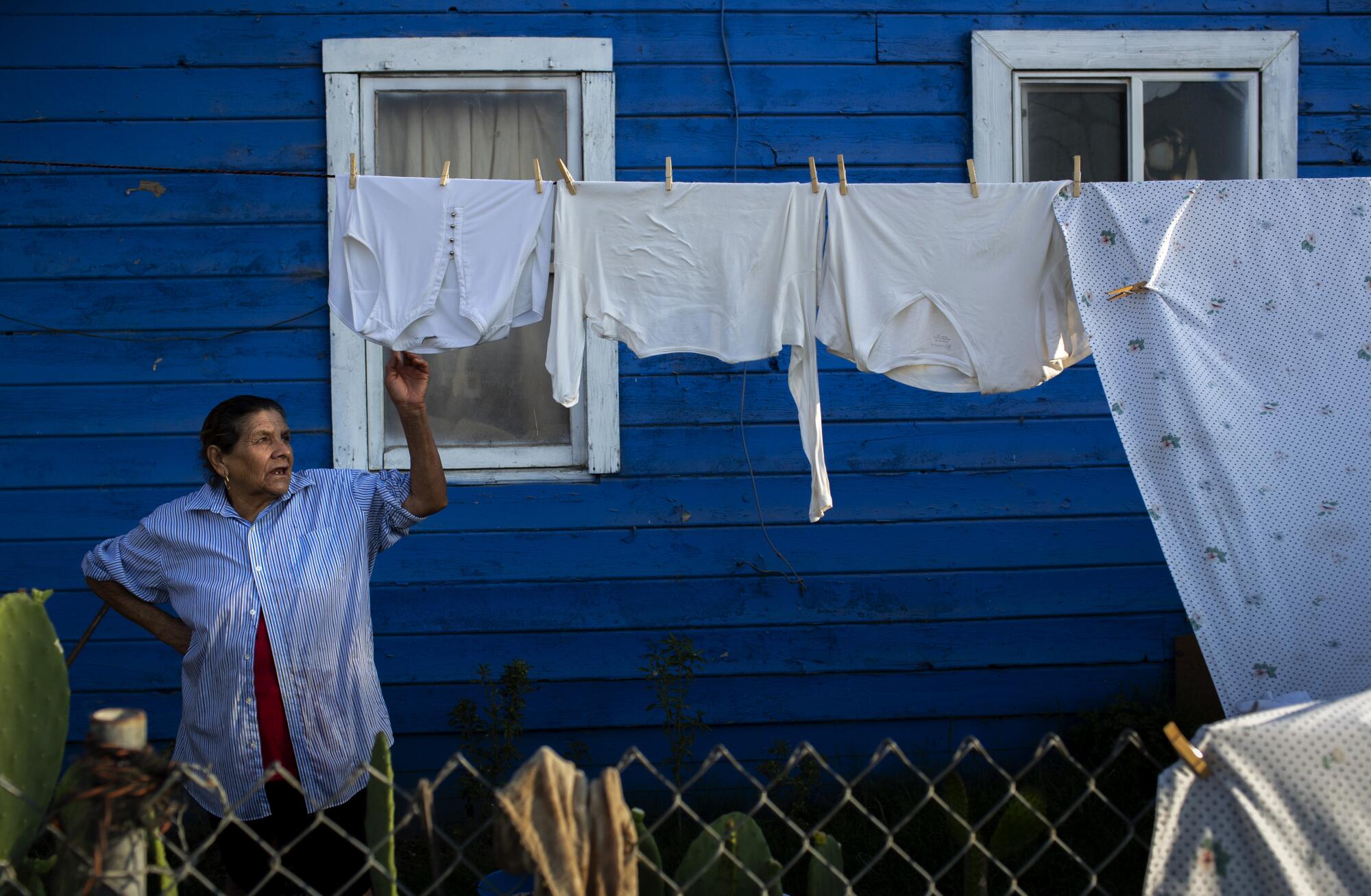
People in Stratford have tried to do what they can to help it stay afloat. The latest business to open, a taco truck, arrived at the town’s request. To raise money to revitalize the town, a nonprofit called Reestablishing Stratford applies for local grants and receives donations from local clubs and residents to host 5K runs, food drives and even haunted mazes for Halloween.
“Small towns like this remind you of all those little positive traditions that maybe big cities start to lose,” said Robert Isquierdo Jr., a former resident who co-founded the nonprofit with Chavez.
“Rural places and small towns struggle because they lack economic diversification,” said Lisa R. Pruitt, a UC Davis School of Law professor whose work focuses on rural people and places. “If you lose a major employer, then what do all of those people do? In a drought, I assume, agricultural jobs are impacted. If you lose your job doing X, you can’t recover doing Y because Y doesn’t exist.”
Two arches that once boasted “Yearly: 1 Million Pounds of Butter. 1 Million Sacks of Grain” stand on opposite ends of a median strip in the center of Stratford.
Main Street loops around it. At least 15 businesses, including a barbershop, card room, and Chinese restaurant, once served the growing neighborhood. Grain and cotton crops and dairy farms dominated. Migrants from all over found their way to Stratford for seasonal work, causing the town’s population to balloon.
Basque and Portuguese settlers left their mark. Peter Irigaray built a home in 1919 and turned it into the popular restaurant selling Basque-inspired cuisine. The town held an annual Portuguese celebration in honor of Queen St. Isabel of Portugal with a parade and Mass that was interrupted after many years by the COVID-19 pandemic. Many townsfolk gather at a local lodge for traditional Portuguese food, such as sopas.
Mornings in Stratford are so quiet, bird chirps and the crunch of car tires over dried leaves against asphalt are amplified. Families sit outside in their yards before the sun gets unbearable. Chickens and dogs roam freely. For fun, some families ride quads or go fishing outside of town at Kings River and Tulare Lake Canal. Some high schoolers play chase with stray dogs and hang out at the local elementary school until it’s time to go home.
As the morning sun cast an orange hue across the valley on a late September day, farmers trickled inside a makeshift coffee shop set up at a Napa Auto Parts along Main Street for a free cup of watered-down Folgers. That day’s edition of The Fresno Bee lay on a nearby table along with stacks of My Job Depends on Ag Magazine.
For as long as they can remember, farmers always met at this auto part store because there wasn’t any other public place to meet for coffee.
Conversations range from the latest agricultural machinery to one farmer’s recovery from COVID-19.
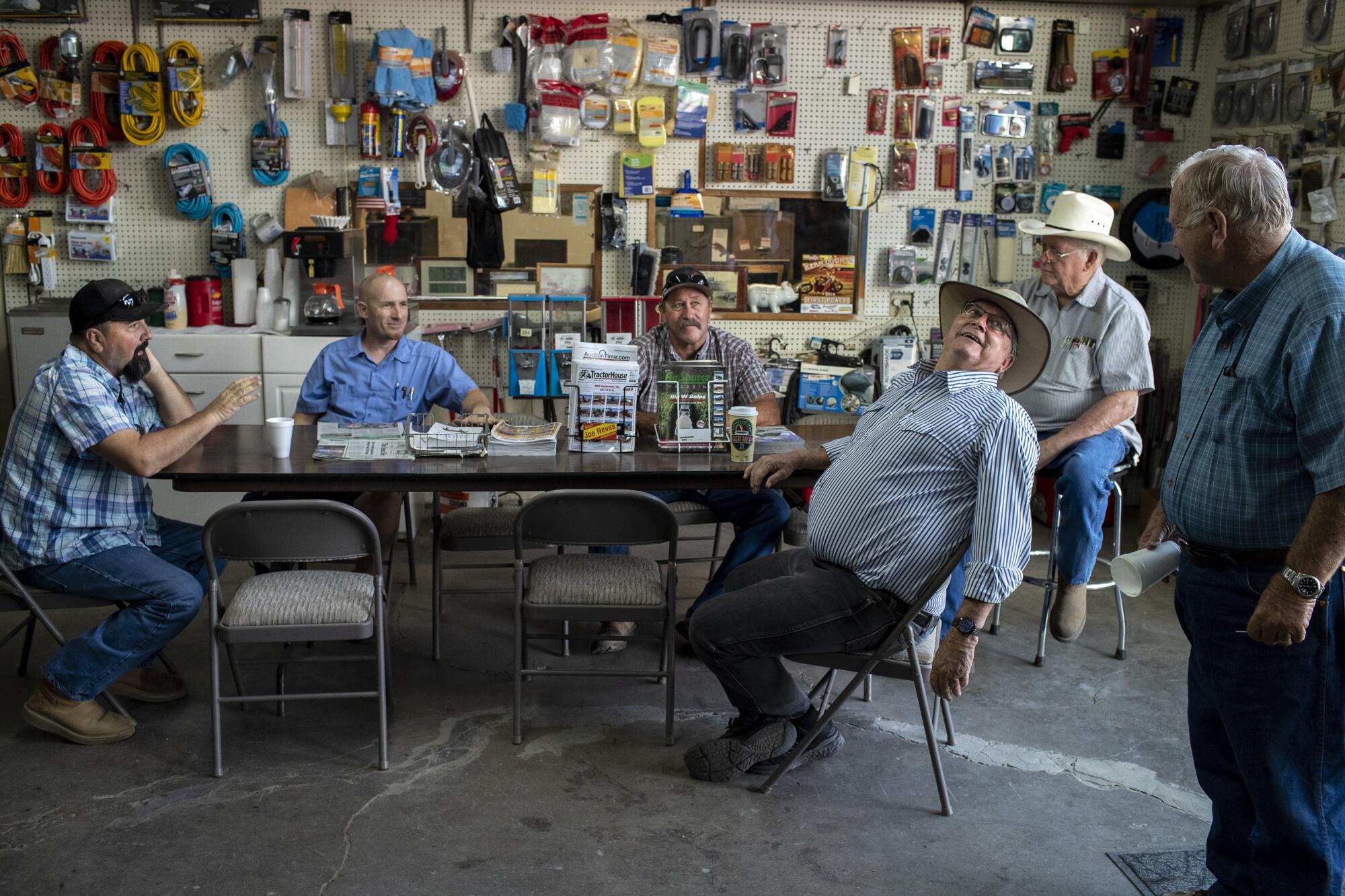
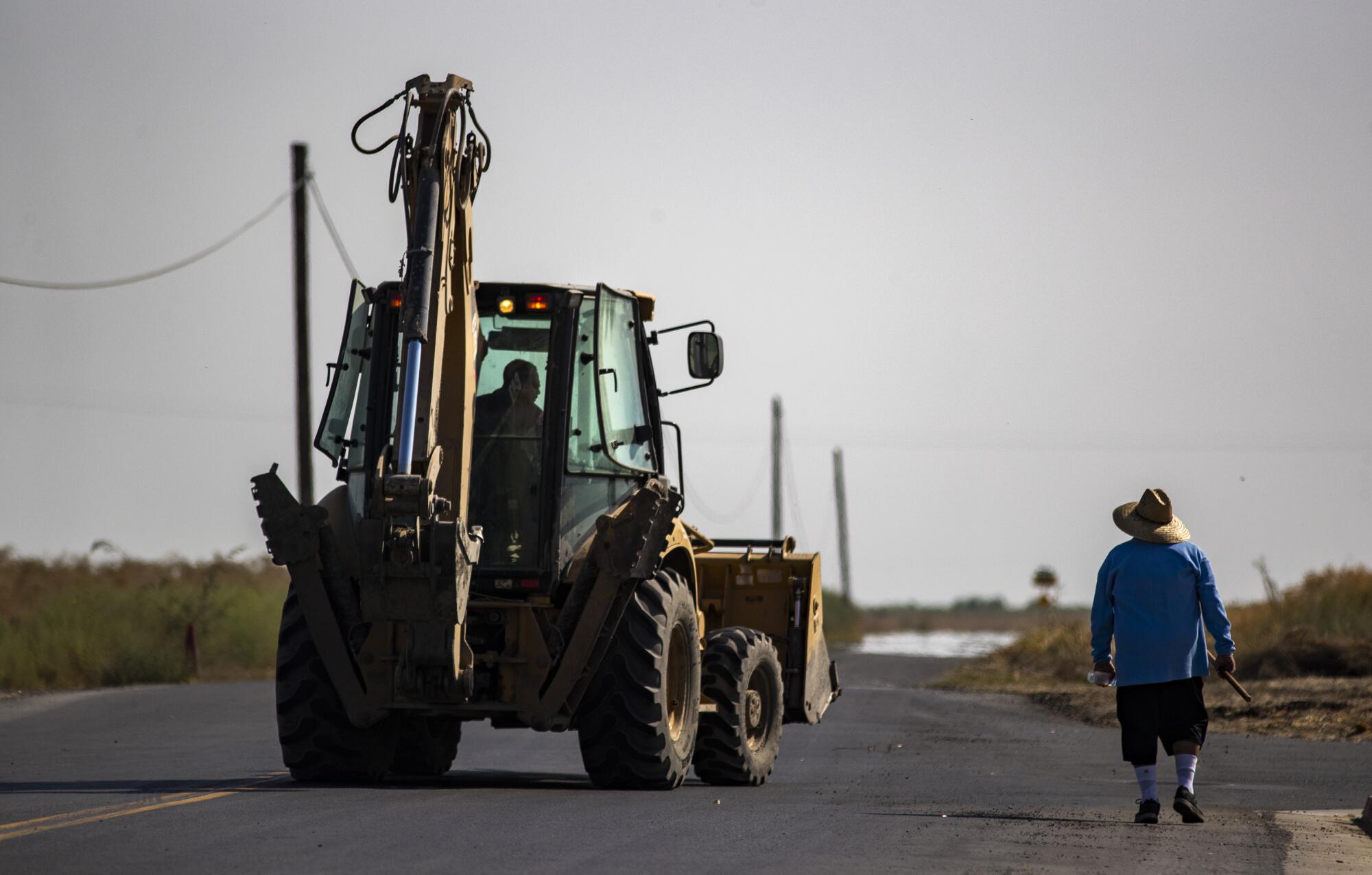
“It used to be a little Mayberry when we were kids,” said hay farmer Danny Rodrigues, 52.
“Can’t get a gallon of milk no more,” another farmer complained. “Only candy, beer and chips.”
Wesley Rodrigues’ father used to own the store, then he died. Now, Wesley, 41, manages it with his mother and older brother.
The background chatter is a familiar sound to Wesley, 41, as a he rang up a customer who bought a mop. He remembers listening in on an older group of farmers when he helped his uncle restock the shelves as a boy.
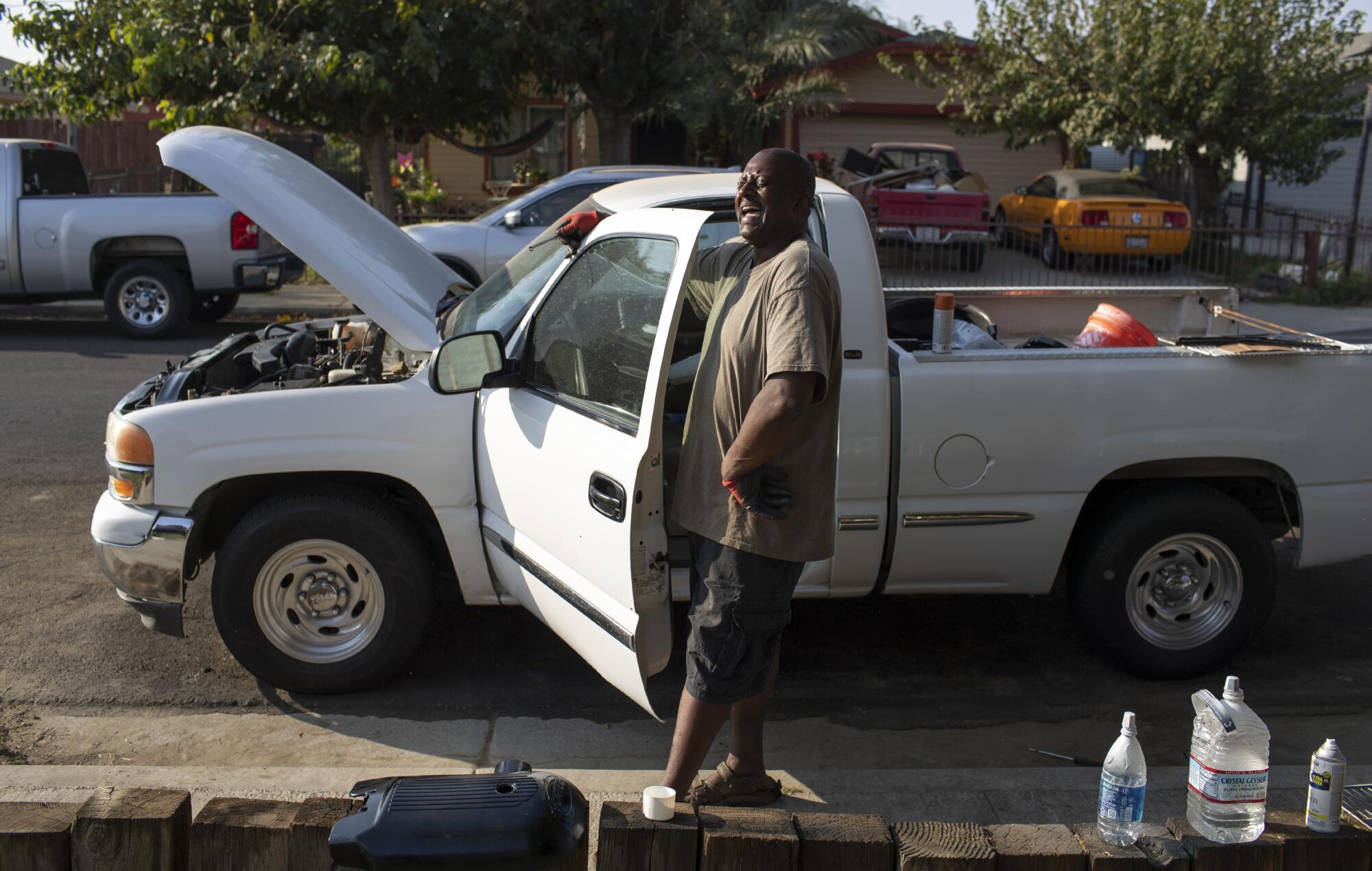
Across the street, past the median strip, there is a liquor store, a market, a clothing store with a food truck, a U.S. Post Office, a community health center, farm equipment supplier N&S Tractor and a Pentecostal church.
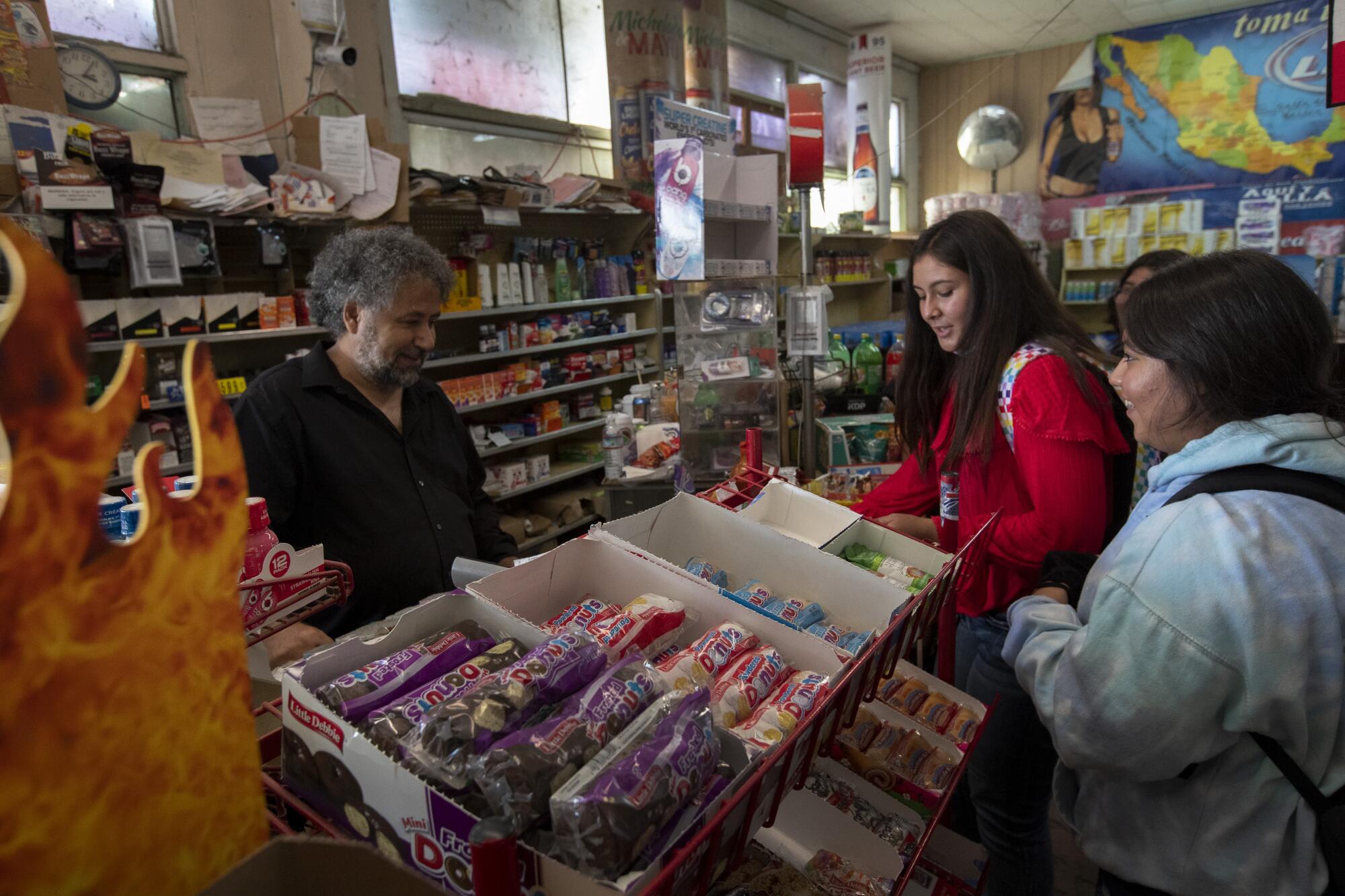
By 8 a.m., Mahmod Alrihimi — better known as Kenny — opened his market across from Napa. The longtime store owner, originally from Yemen, arrived in Stratford in 1990 and opened his shop. He’s seen how a confluence of struggles in agriculture have impacted his business and Stratford. He stopped selling meat years ago when migrant workers no longer showed up. Too many pounds of beef and steak rotted, he said.
“It used to be busy, but not anymore,” he said.
He moved to Lemoore with his family in 2019 for a better house. He’s considered taking his store to a larger town, but that would cost money he doesn’t have. Most of the time, he’s bored. He talks on the phone with family members to pass the time. Or watches the news on his iPhone. Sometimes, he stares off as he sits behind his register in silence.
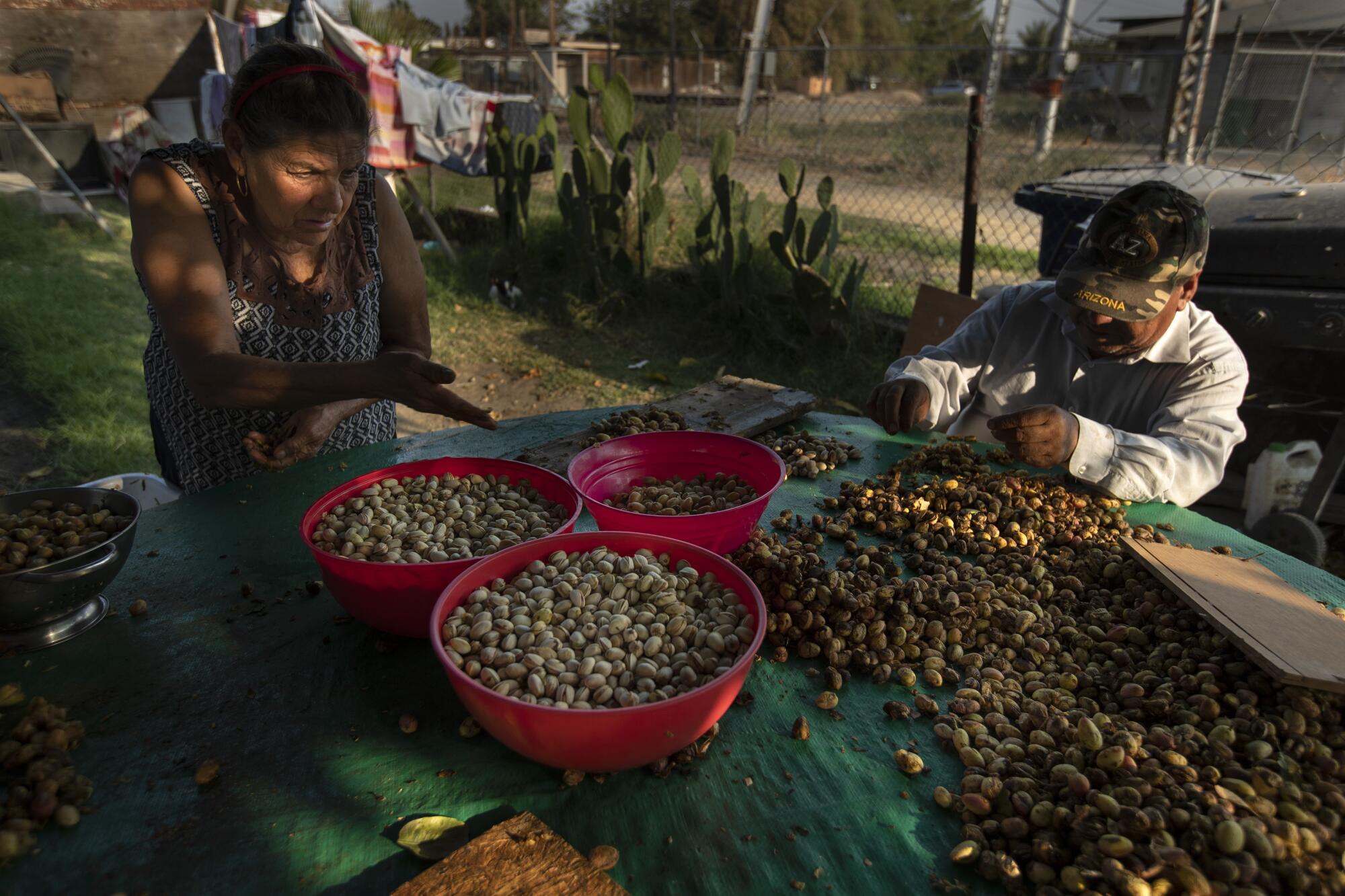
Alfredo Encinas, 41, and Melissa Plascencia, 27, left their home in Riverdale, about 20 miles north, and settled in Stratford in 2018. After three months of refurbishing the vacant storefront on the Main Street near Kenny’s market, the couple opened El Mochomo.
They sold Portillo work boots and offered money transfers the first year. Folks weren’t interested in new shoes, but relied on the transfers to send remittances to Mexico. Plascencia said profit was minimal. A $1,000 transfer earns her about $15 — hardly enough to make ends meet even in an area with a median annual income of about $50,000 per household.
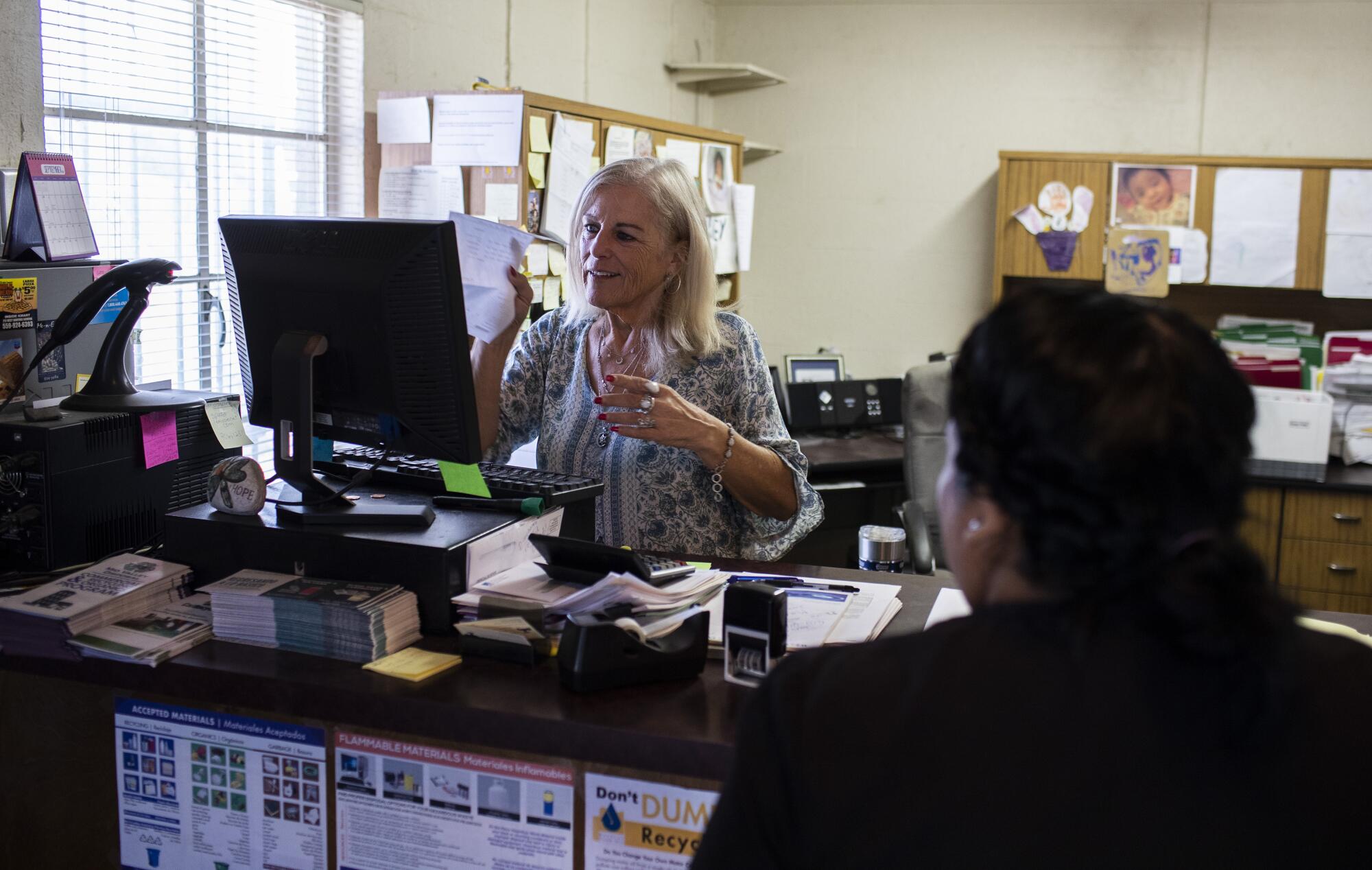
So she brainstormed another idea to help supplement their income: selling bacon-wrapped hot dogs. They parked a cart in front of their store and added chairs on their sidewalk. Residents soon started asking for tacos, burritos and tortas.
From 10 a.m. to 9 p.m., they juggle the shop and food truck. Their upgraded truck is decorated with images of the food they sell — and La Virgen de Guadalupe.
Still, the couple say their profits are meager. There have been times when Encinas takes on temporary work at a dairy farm, Plascencia said.
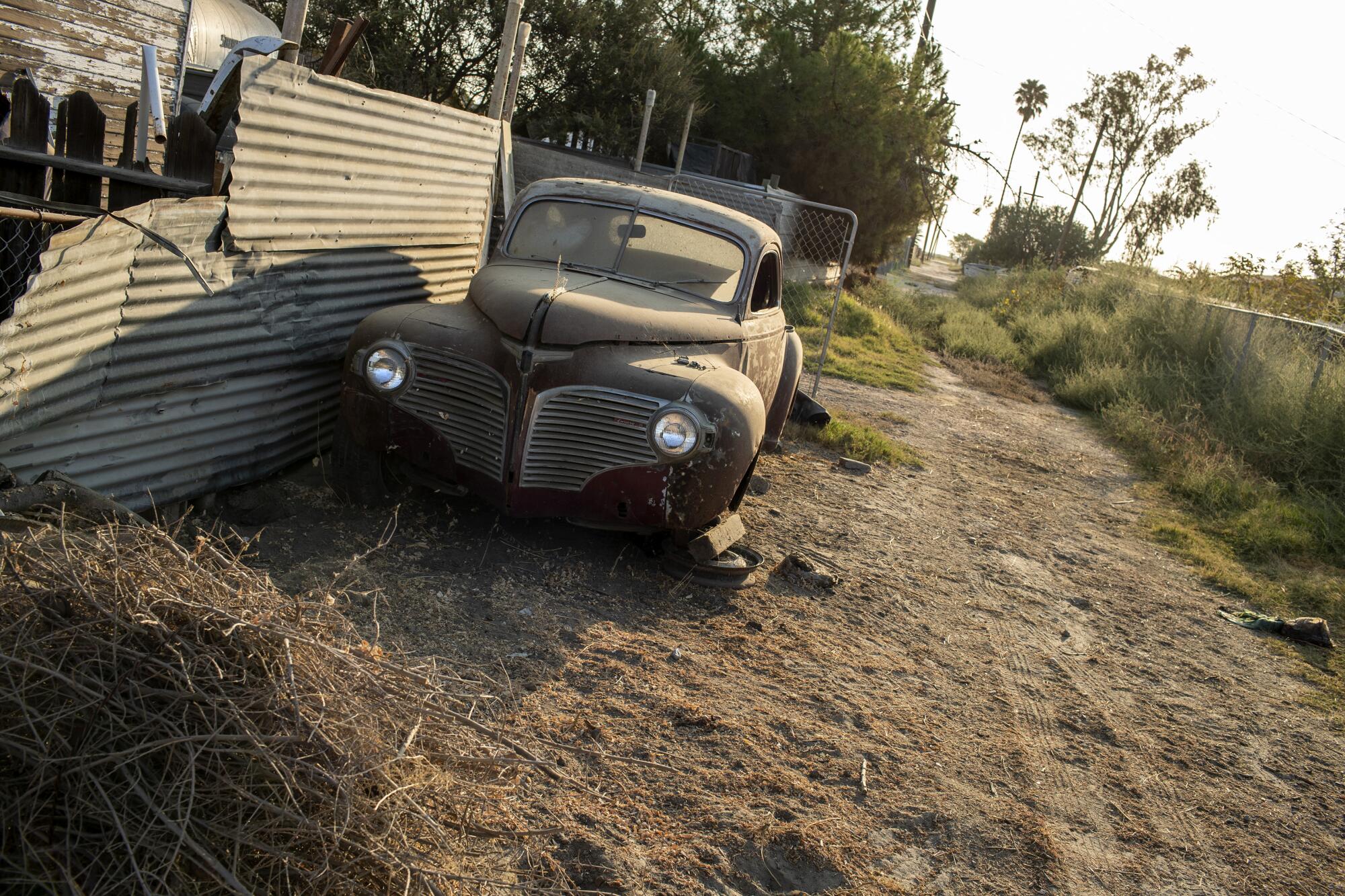
As the valley’s heat waned in the late afternoon, Miah Villaseñor, 16, and her five friends punctured the town’s silence. Bethany Zavala, 16, and Britney Montoya, 16, giggled as they roamed the library aisles with the red Kool-Aid Bursts they bought at the market. Others slammed their backpacks down on a round table.
Asked what they did to pass the time, they playfully pointed out their town’s shortcomings. There was no gas station. It’s hot.
“We like getting chased by dogs,” Britney said, prompting laughter from her friends. “This is the place to get a free dog.”
“If you want a business, don’t open up here,” Bethany said. “The thrift store opened one day, then never again.”
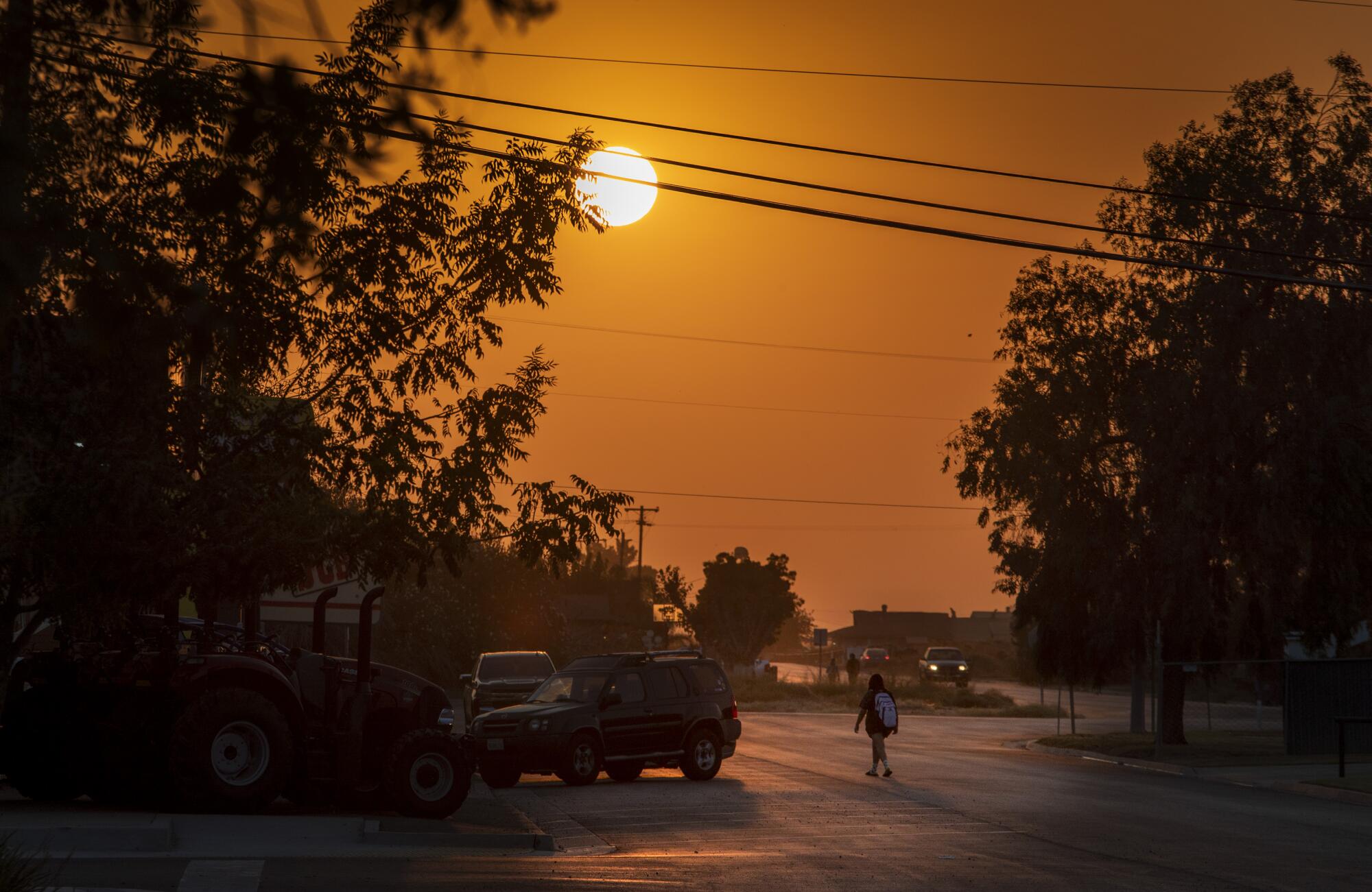
The teens dreamed of pursuing careers as attorneys, in law enforcement, as veterinarians in big cities and maybe other states. But they still felt there was something special about small town life.
“The community comes together when its needed,” said Miah, Stratford born and raised. “And when people come together, they can make new friends.”
More to Read
Sign up for Essential California
The most important California stories and recommendations in your inbox every morning.
You may occasionally receive promotional content from the Los Angeles Times.



